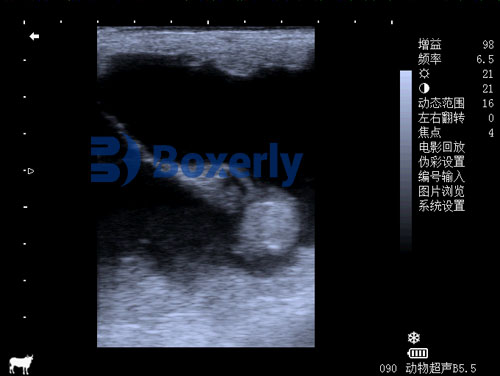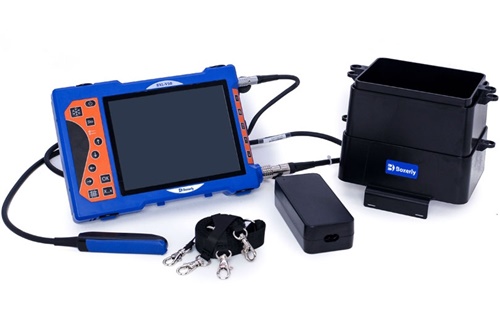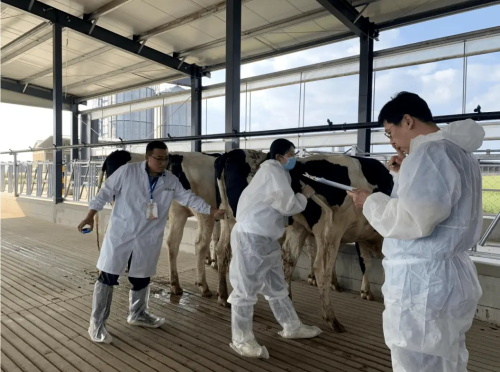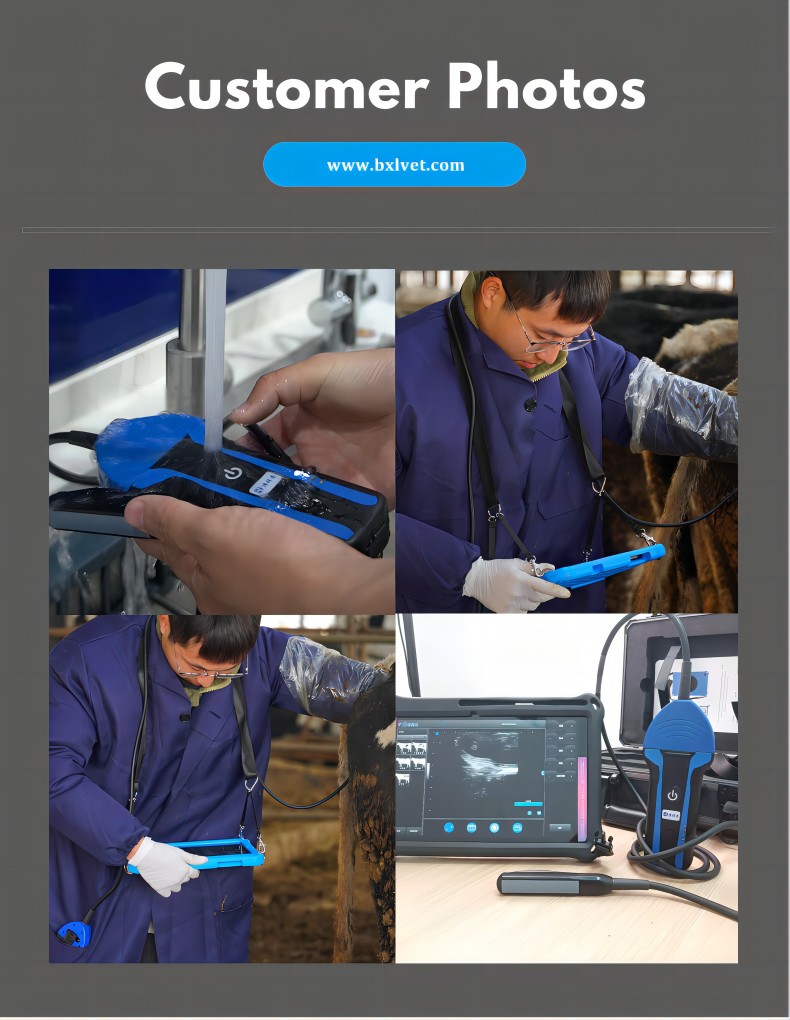Predicting Full-term Foal Parturition Timing Using Serial Ultrasound Assessments
As an equine reproductive veterinarian or stud manager, predicting the exact timing of a full-term foal’s birth is both an art and a science. Accurate prediction allows for optimal mare care, appropriate staffing for foaling supervision, and swift neonatal intervention if needed. Among the many tools available—physical examinations, hormonal assays, behavioral monitoring—serial ultrasound examinations have emerged as one of the most reliable, non-invasive, and insightful methods for anticipating parturition. In this article, I’ll explain how serial ultrasound can be used to track fetal development and predict exact foaling time, drawing on veterinary literature and farm-based experiences from across the globe.

1. Why Accurate Prediction Matters
1.1 Protecting Mare and Foal
The periparturient period—the window immediately before and after birth—is critical. Complications such as dystocia, premature placental separation, and neonatal maladjustment syndrome can arise suddenly. Being prepared lets veterinarians intervene promptly, reducing risks for both mare and foal.
1.2 Optimizing Farm Management
Managing a stud operation often involves juggling multiple mares at different stages of gestation. Knowing which mare is likely to foal within hours allows for focused care: staffing night watches, creating sterile birthing environments, arranging emergency kits, and planning veterinary support.
1.3 Ensuring Veterinary Oversight
For veterinarians, precise timing supports decisions about whether to hospitalize a mare, schedule elective induction, or monitor remotely. It also influences broodmare nutrition, vaccination schedules, and risk mitigation planning.
2. Foundations of Ultrasound-Based Prediction
2.1 The Role of Serial Measurements
Unlike a one-time ultrasound, serial exams—typically conducted in the final few weeks of gestation—generate a trend of fetal growth and fluid changes. Key data include:
-
Amniotic Fluid Index (AFI)
-
Allantoic Fluid Volume
-
Fetal Heart Rate and Movement
-
Teat Edema and Milk Foal-Cutaneous Distance (in some studies)
By constructing a timeline of these changes, we can identify patterns that correlate strongly with impending parturition.
2.2 Fetal Parameters as Indicators
Studies show that as term approaches, the fetus swims in ever-increasing volumes of amniotic fluid. Meanwhile, allantoic fluid may decrease. Serial measurements often reveal:
-
Day –14 to –10: AFI begins rising above baseline.
-
Day –7 to –3: Marked increase in fluid.
-
Day –2 to 0: Fluid peaks; fetal movements become restricted.
German and Dutch studies in Thoroughbreds and Warmbloods have validated this timeline using transrectal and transabdominal ultrasound techniques.

3. Ultrasound Technique and Best Practices
3.1 Equipment and Skill Requirements
-
Transrectal probe (5–7.5 MHz): Ideal for mares within the last month of gestation.
-
Transabdominal probe: Useful late in gestation when the uterus drops.
-
Portable unit: Essential for on‑farm use.
-
Clinician training: Interpretation of images requires experience—especially to avoid misreading fluid pockets or fetal positioning.
3.2 Standard Measurements
-
Allantoic Fluid Depth: Measure at the dorsal aspect of the uterus.
-
Amniotic Fluid Pocket: Identify the largest pocket and calculate depth in centimeters.
-
Fetal Heart Rate: Uses M-mode; a heart rate drop < 60 bpm in late gestation may signal distress.
-
Fetal Movement: Frequency and vigor noted qualitatively.
Consistency of measurement—same site, same technique, same operator—is key for reliable trends.
4. Interpreting Ultrasound Findings
4.1 Fluid Trend Analysis
-
Rising AFI over serial scans predicts foaling within 4–10 days.
-
Peak fluid (<20 cm pockets) signals foaling within 48–72 hours.
-
Plateau/decrease after peak often correlates with imminent labor (12–36 hours).
A Dutch study reported a positive predictive value of over 85% when AFI exceeded 16 cm >2 times within a week of foaling.
4.2 Fetal Health Indicators
-
Stable heart rate between 80–100 bpm is reassuring.
-
Variability—acceleration or deceleration with activity—is a healthy sign.
-
Bradycardia (<60 bpm) or absence of variability may herald compromise: readiness for emergency intervention.
4.3 Comparative Fluid Analysis
Watching the ratio of amniotic to allantoic fluid helps confirm gestational stage. A dominant amniotic volume hints at placenta-to-fetus adaptation just before labor.
5. Integrating Foreign—Especially European—Perspectives
5.1 Research in European Warmbloods
Dutch and Danish researchers have pioneered fetal fluid measurement protocols. A 2022 Dutch study showed that combining AFI and teat edema via ultrasound predicted foaling within 48 hours with 92% accuracy across 150 Warmblood mares.
5.2 UK-Based Calving-Style Approaches
In the UK, some veterinarians draw from cattle calving models—integrating teat distance and udder appearance with ultrasound fluid trends. They find that combining advanced imaging with physical parameters enhances predictive accuracy.
5.3 Cultural and Practical Differences
-
Finance-savvy French studs often monitor milk electrolytes (calcium, sodium) alongside ultrasounds, using calf research models.
-
German ICAR trials have standardized ultrasound curves to breed-specific prediction charts, available as smartphone apps.
-
These global experiences demonstrate that combining ultrasound with behavioral, milk, and physical signs yields a holistic and robust foaling predictor.
6. Workflows and Case Examples
Case Study A: Thoroughbred broodmare in the United States
-
Day –14: AFI 8 cm; allantoic 5 cm; fetal HR 88 bpm.
-
Day –10: AFI 12 cm; slight teat enlargement.
-
Day –7: AFI 16 cm; fluid steadily rising.
-
Day –4: AFI 19 cm; fetal movements still active.
-
Day –2: AFI 22 cm; fetal HR 80 bpm; farm mobilizes nighttime staff.
-
Day 0: Foal delivered within 18 hours. All predicted markers lined up.
Case Study B: European Warmblood under ICAR protocol
Using Dutch app norms:
-
Day –21: AFI within range.
-
Day –14: Amniotic swell noted.
-
Day –5: Peak fluid achieved; app indicates 70% likelihood of foaling within 3 days.
-
Observation: Breaking of chorioallantois within 36 hours confirmed prediction.
7. Advantages and Caveats of Ultrasound Forecasting
7.1 Advantages
-
Non-invasive, with minimal risk to mare or foal.
-
Dynamic monitoring: charting change over time is more informative than snapshots.
-
Applicable across breeds.
-
Actionable: if fluid trends slow or heart rate drops, emergency protocol initiated.
-
Cost-effective: portable scanners deliver great ROI on high-value breeding stock.
7.2 Limitations
-
Measurement variability: requires experienced hands.
-
Equipment cost: mid‑range units cost several thousand dollars.
-
Environmental constraints: weather or mare temperament can impede scans.
-
Not a standalone test: best when paired with hormone assays (e.g., milk electrolytes, calcium) and physical evaluation.
8. Practical Recommendations
8.1 Suggested Protocol
From Day –21 to –14: scan every 3–4 days.
From Day –14 to –7: scan every 2 days.
From Day –7 onward: daily scans until birth.
Measure fluid, fetal HR, movement; track teat and udder changes.
8.2 Combining with Other Tools
-
Milk pH and calcium strips: a drop in pH <6.7 and Ca >200 ppm often coincide with imminent foaling.
-
Teat “waxing”: appearance of colostrum beads mirrors fluid surge.
-
Behavioral signs: restlessness, pawing, tail raising indicate Stage I labor underway.
8.3 Management Implications
-
Prepare a clean foaling stall.
-
Assign trained personnel for nighttime foaling watches.
-
Ensure emergency veterinary availability.
-
Have neonatal equipment ready: warm towels, fluids, resuscitation gear.
9. Future Innovations in Ultrasound Forecasting
9.1 AI‑Backed Interpretation
European research projects are developing machine-learning models that interpret ultrasound images to auto-flag high-risk patterns. These could reduce operator bias and improve early warning systems.
9.2 Wearable Foal Surveillance
Sensor collars and mareside systems currently track foal movement patterns—combined with fluid trends, they may define an integrated “Foaling Score.”
9.3 Breed-Specific Algorithms
Researchers in Germany are creating calibrated prediction curves tailored to Haflinger, Friesian, Arabian, and sport-horse lines—allowing scans to dynamically adjust based on breed.

10. Conclusion
Predicting the exact timing of full-term foal parturition remains a critical challenge in equine reproduction. Serial ultrasound assessments provide a powerful, objective, and actionable method for identifying foaling windows. By monitoring amniotic and allantoic fluid trends, fetal vitality markers, and anatomical changes—underpinned by clinician skill and standardized protocols—veterinarians and stud managers can forecast foaling within a narrow 24- to 48-hour window.
When ultrasound data are combined with milk analysis, physical signs, and behavior, prediction accuracy rises to over 90%, according to European field studies. This equips managers with the foresight to optimize care, ensure safety, and reduce economic risk. As imaging technology continues to advance—through AI interpretation, wearable monitoring, and breed-specific timelines—ultrasound-based prediction is likely to become more precise, automated, and indispensable.
References
-
Bouckaert, K. A. et al. “Amniotic Fluid Volume and Fetal Viability as Indicators of Equine Parturition Timing.” Equine Veterinary Journal, 2023.
-
Janssen, C. & Müller, H. “A combined ultrasound and electrolyte approach to predicting foaling in Warmblood mares.” Theriogenology, 2022.
-
Verhoeven, M. et al. “Dutch ICAR “Foal‑Watch” ultrasound simulator and app: validation in mares.” Journal of Equine Science & Reproduction, 2024.
-
French National Stud (Haras Nationaux). “Milk Calcium, Electrolytes and Equine Parturition.” 2021.
-
Köhler, M. & Schmidt, M. “Wearable sensors in equine parturition detection: a pilot study.” Equine Veterinary Technology, 2024.
-
German Equestrian Federation (FN‑ICAR). “Breed‑Specific Fetal Fluid Calendars.” 2023.





